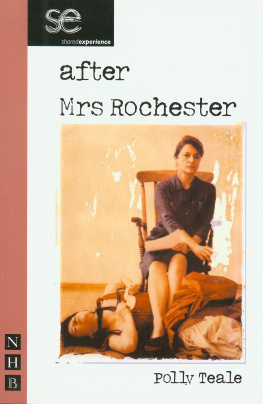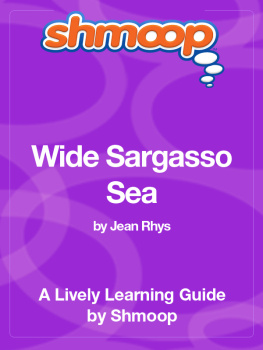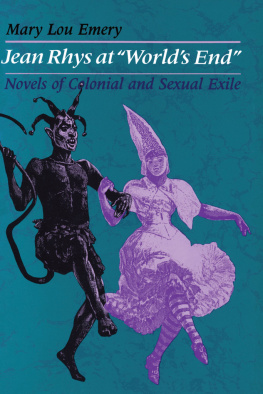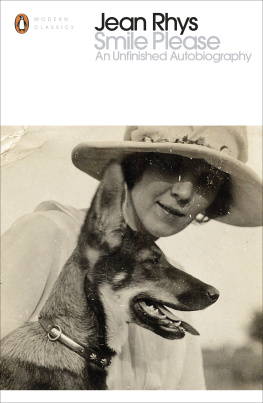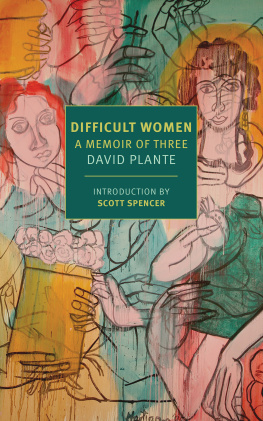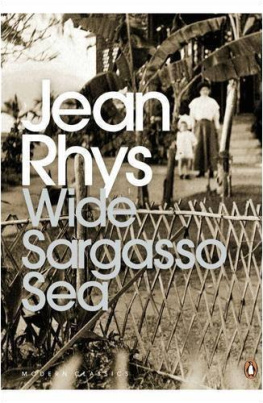AFTER MRS ROCHESTER
a play by
Polly Teale
based on the life of Jean Rhys

NICK HERN BOOKS
London
www.nickhernbooks.co.uk
Contents
After Mrs Rochester was first performed by Shared Experience Theatre Company at the the Royal Theatre, Northampton on 6 March 2003 and subsequently at the New Wolsey Theatre; Oxford Playhouse; Stages at Thoresby Park; Lyric Hammersmith, London; and Guildfords Yvonne Arnaud Theatre. The cast, in alphabetical order, was as follows:
LANCELOT | David Annen |
BERTHA | Sarah Ball |
TITE / META | Syan Blake |
MOTHER / STELLA | Hattie Ladbury |
DAUGHTER / JANE EYRE | Amy Marston |
ELLA | Madeleine Potter |
JEAN | Diana Quick |
GENTLEMAN | Simon Thorp |
All other parts are played by members of the company
Writer and Director | Polly Teale |
Designer | Angela Davies |
Movement Director | Leah Hausman |
Composer | Howard Davidson |
Lighting | Chris Davey |
Dramaturgy | Nancy Meckler |
Many thanks to Ellen Moerman for her permission to quote from Jeans writing. Thanks also to Carole Angier for her wonderful biography of Jean Rhys which was published by Penguin Books (permission given by Rogers, Coleridge and White Ltd).
Interview with Polly Teale
as printed in the programme for the Shared Experience production, 2003
What made you decide to write a play about Jean Rhys?
I read Jeans novel Wide Sargasso Sea whilst doing research for my own adaptation of Jane Eyre . I was immediately moved by the intensity of the writing, the profound sense of loneliness, of dislocation. The introduction to the novel contained a few details of Jeans life and it intrigued me. As I began to read the rest of her novels, and find out more about her, a picture began to emerge of an extraordinary life. I was struck by the parallels between her own story and that of Mr Rochesters mad wife the woman who would become the heroine of Jeans late masterpiece, Wide Sargasso Sea . Like Jean, Mrs Rochester was a white Creole born in the West Indies who ended her life isolated in the remote English countryside.
Tell us more about Mrs Rochester why was Jean drawn to write about her?
Jean first read Jane Eyre as a young woman. I have often thought how startling it must have been to discover a West Indian character hidden amongst the pages of English literature, which made up her fathers library. It is not surprising that this creature took hold of Jeans imagination. She too was rebellious. She too felt misunderstood. She too was prone to fits of violent temper. Years later Jean would be sent to Holloway Prison for biting a neighbour who she said had made too much noise and disturbed her writing. Mrs Rochester used a similar method of attack on unwanted intruders into her attic.
By the time we meet Mrs Rochester in Jane Eyre , she has become a monster, scarcely recognisable as human. It is not surprising that Jean felt a desire to rewrite Mrs Rochesters story, to tell it from the beginning. To tell it from the inside.
Why the locked room? Where did that idea come from?
As I found out more about Jeans life I was struck by the number of relationships she had had (including three marriages and many affairs) but how rarely she had ever felt close to anyone. She wrote, Ive always felt best when I was alone. Felt most real. People have always been shadows to me... I have never known other people.
Her own daughter never lived with Jean. She found it hard to get to know her mother. Her visits often ended in acrimony. The metaphor of the locked room began to take hold. Whilst Mrs Rochester was literally locked up and held captive, Jean was also a prisoner; a prisoner of her own psyche, of the conditions that had created her unhappy life, the schizophrenia of growing up as a poor colonial, her critical controlling mother who convinced her she was unlovable.
Jeans mother seems to be a key figure...
I wanted Jeans mother to represent that whole system. The fear that underlay so much of the way colonials behaved their obsession with control and order in the face of the unknown. Although she behaves monstrously, I see her as a tragic figure born into a regime that was based on repression.
So it was Jeans mother that instilled these fears into Jean?
It must have been very confusing for Jean, she saw and longed for the freedom of the islanders, yet her head was crammed full of Western notions of respectability and superiority.
Do you think this schism partly explains Jeans unhappiness?
In Carole Angiers excellent biography she describes how the novelist Rosamund Lehman met Jean in later life, having admired her novels. They met for tea in a smart London restaurant. She was expecting to meet a bohemian, a kindred spirit, but Jean was a picture of poise and elegance. She was charming but distant and refused to talk about her work at all. Later, when Rosamund was invited to Jeans home, she met a different woman. Jeans husband answered the door. His face was scratched. Jean was drunk and dishevelled, muttering angrily; only half aware of her guest, whose visit she had forgotten. Rosamund stayed only a few minutes.
The need to conceal the parts of herself that she knew to be unacceptable was a constant theme in Jeans life. Her obsession with her appearance and her clothes was in part due to this. Yet in spite, or perhaps because of, her need to hide, she spoke the truth in her novels. They are as vivid an account as you will find of the dark underside of human experience, the voice of the underdog, the outsider. She speaks for anyone who has ever felt alone or afraid.
For Jean writing was not a choice but a necessity. Through it she tried to exorcise her demons. She once said, When youve written it down it doesnt hurt any more.
She was not always successful. She also wrote, If I could put it into words it might go. Sometimes you can put it into words and get rid of it. But there arent any words for this fear. The words havent been invented. ( The Sound of River ).
And yet Jean did find the words. With extraordinary honesty she strips away the layers of social behaviour and shows ourselves at our most naked, our most alone.
Jean Rhys: a Chronology
1889 (Nov) Older baby sister dies (before Jeans birth).
1890 (August) Born in Dominica Ella Gwendolen Rees Williams.
1896 Sister, Brenda, born.
1904 (May) Goes to board at convent.
1904 Meets Mr Howard.
1905/06 Leaves convent.
1907 Sent to England.
1907/08 The Perse School, Cambridge.
1909 (Jan-July) RADA. Leaves becomes a Chorus Girl, touring the UK.
1910 Meets Lancelot Gray Smith.
1912 Affair with Lancelot ends, although he supports her financially until 1919.
1913 Late abortion, paid for by Lancelot.
1914 Works as artists model and escort.
1917 Meets and starts affair with John Lenglet.
1919 Moves to Holland with John.
1919 (April) Marries John. They move to Paris.
1920/21 Moves to Vienna, then Budapest.

